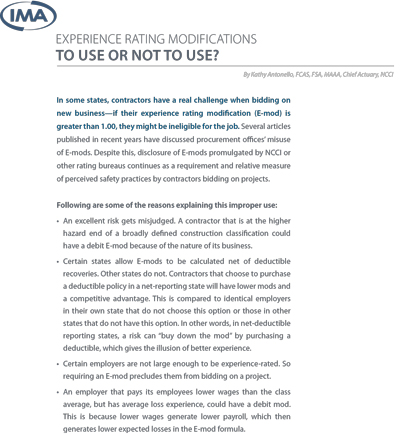The use of the workers’ compensation experience modification factor (or EMR “rate” as it is known in the construction and energy industries), has inappropriately evolved over recent years as a measure of safety. This factor is often used as a qualifying metric to bid a project.
Using the Experience Mod Factors as a Gauge of Safety
A company may be disqualified from bidding on some projects if their modification factor is greater than 1.00. While the intention of this measure is to award contracts to companies that are safe, it may be, inadvertently, awarding them to companies who house large payrolls, instead. The experience modification factor is influenced by numerous external factors, completely unrelated to safety and many outside of the control of the employer.
A client company was bidding on a project that required a .80 modification factor. This contractor was completely injury-free for more than six years, but was disqualified from bidding on the project because they had a .85 mod factor. Under the current actuarial formula, this contractor was at their lowest possible mod. It was loss-free. It is not mathematically possible to develop low mods for smaller contractors, even those who are completely injury-free. Setting these strict experience mod factor thresholds can discriminate against smaller or midsized companies, disqualifying them from bidding on projects, despite their having an excellent safety and injury history.
